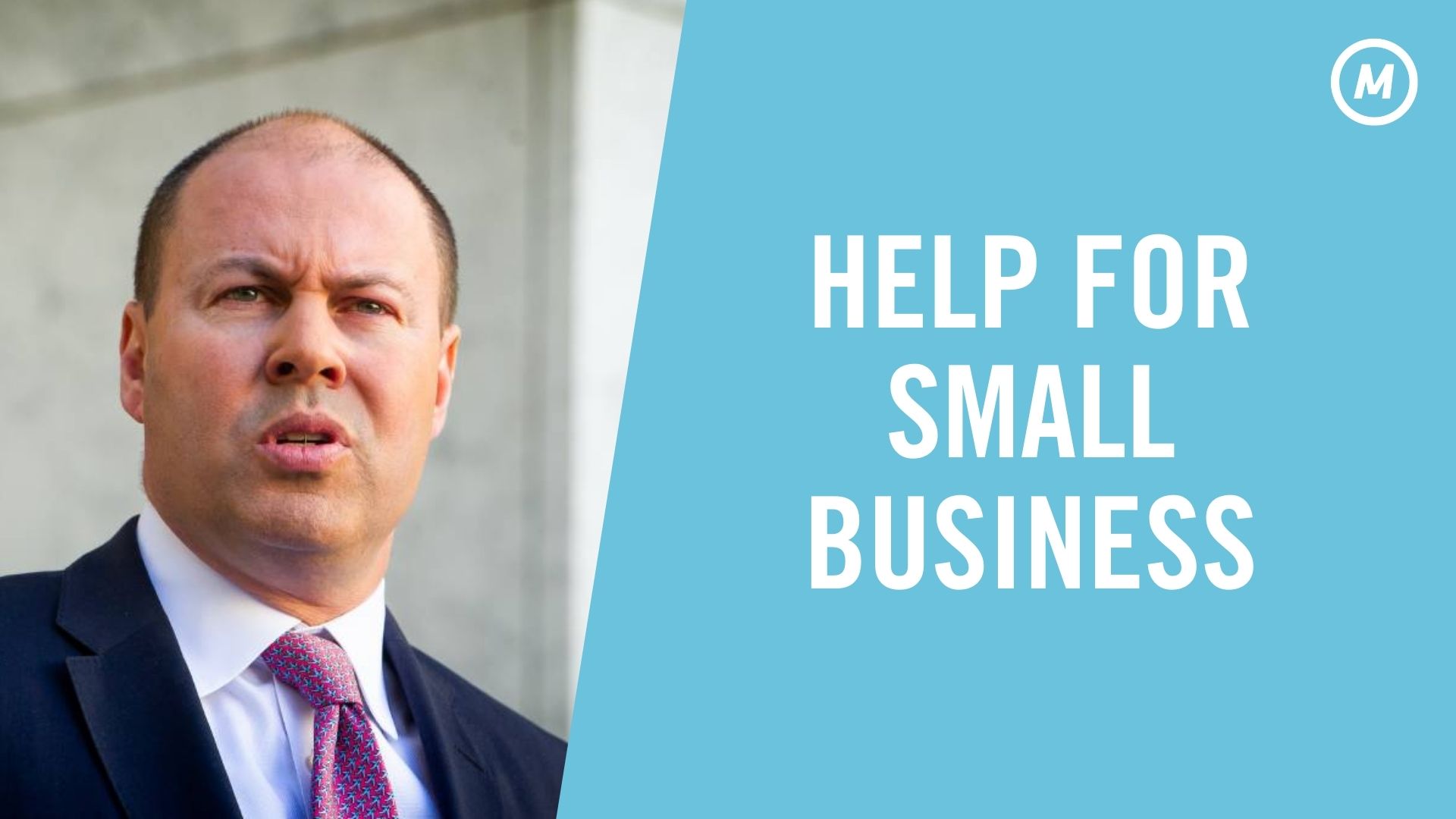
The help for Small Business before the 2020/21 Budget
September 29, 2020
With the Federal Budget only a week away, we’re starting to see a number of significant policy announcements that herald a big shift in economic decision making.
Facing a $225 billion deficit, stimulatory infrastructure spending and tax cuts have been signalled ahead of the budget, and while these measures will play an important part in our economic recovery, they don’t do enough to help Australia’s small business community. As Mark Bouris says, we need courageous thinking and bold action to support Australian small businesses out the other side of this pandemic-induced recession.
Last week the Federal Treasurer Josh Frydenberg announced two major reforms that will directly benefit small businesses around the country.
- changes to Australia’s insolvency laws to support the small businesses that have had to take on excessive debt to survive through the lockdowns.
- reforms to Australia’s lending laws that will improve the flow of credit, making it easier for households and businesses to borrow money.
Insolvency reforms explained
The COVID-19 induced recession has forced many small businesses to substantially increase their debt levels in order to keep their doors open during the pandemic. Current legislation makes it difficult for businesses facing financial distress to survive, and further makes the process of shutting your business down a drawn out and expensive affair.
The newly announced reforms feature three key elements
- A new, faster and simpler debt restructuring process to maximise a businesses chance of survival.
- A new liquidation pathway for small businesses, to allow a faster and lower-cost liquidation which will increase returns for creditors and employees.
- Measures to ensure the insolvency sector can respond to an increased demand for services following the end of existing temporary relief measures.
The new debt-restructuring process will see a shift in the process from the current “creditor in possession” model to a “debtor in possession” model – explained here. The business will have 20 days to put together a debt-restructuring plan, after which creditors will have 15 days to vote on the plan. Over this time, there will be a moratorium on any actions of creditors against the business.
Businesses with under $1 million in liabilities will be eligible for this new debt-restructuring process, covering 76% of businesses that will face insolvency. The debt-restructuring plans will be advised on and delivered by a small business restructuring practitioner.
Responsible Lending reforms explained
Access to credit is vital to Australia’s economic success, and over time, additional legislation has squeezed this artery of our economy.
A key element in these reforms to lending is a shift away from the current “lender beware” model towards a “borrower responsibility” principle. The current focus of responsibility on the lender, a position built up following the Global Financial Crisis and the Hayne Commission has seen lenders become excessively cautious, and slowed the flow of credit to households and businesses.
Read more about the changes here.
Put crudely, more credit leads to more spending, so the Government is hoping that peeling back several of the Hayne Commission changes to lending will help to stimulate spending. Time will tell.
“Lenders do not want to lend money to someone that can’t pay them back,” Mark Bouris said.
“This is important, courageous economic policy which if passed will bolster liquidity in our pallid economy.”
Post